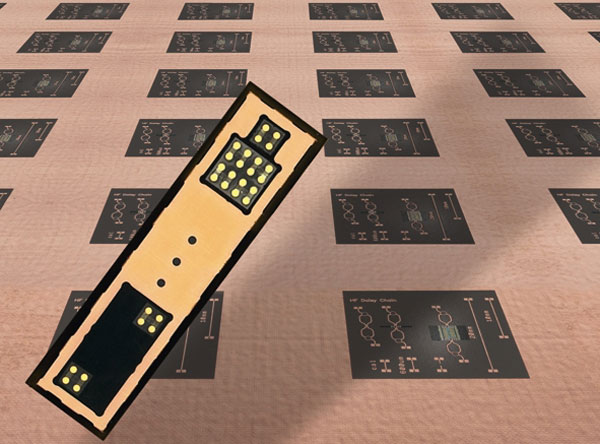Cost-effective packaging for radar sensors
Radar sensors are already employed in production model vehicles (e.g. ACC). Further development of driver assistance systems has also led to the use of radar sensors in active safety features (brake assistance, collision warning, etc).
However, the costs of manufacturing such radar-based systems, capable of gathering information from surroundings, for vehicles across the market spectrum or for compact executive cars are still too high. Thus, despite the improved reliability characteristics, detection properties and security required of these sensors, the aim is to manufacture such systems more cost-effectively.
The “KRAFAS (Cost-optimized Radar Sensor for Active Driver Assistance Systems)” project is aiming at integrating 77 GHz components (esp. SiGe MMICs) into a printed circuit board, combining driver and RF circuitry and integrating antenna elements. This will significantly reduce current costs by 20-30%.
The higher requirements active safety systems place on sensor detection capabilities is to be met by new front-end concepts, e.g. electronic digital beamforming (DBF).
Packaging concept
A new manufacturing process is currently under development for the high-frequency module, whereby a cost-effective "system-in-package" is produced by combining two innovative embedding techniques.
The active and passive com-ponents are first packaged via molding flush to the surface into a polymer casing (‘chip-in-duromer’). In this process, the components can be placed rapidly and with high precision. The subsequent molding process ensures the lasting, precise alignment of the components to each other.
These modules are then embedded by means of a standard mounting process, similar to that for BGA components, into a circuit board and rendered suitable for high-frequency operation via bonding (chip-in-polymer). A second layer of HF-compatible circuit board materials is then laminated onto this package and the respective antenna structures are formed. The two layers are electrically connected using µ-vias. Thanks to low thermal mismatch, such embedding promises high reliability with improved HF-characteristics as a result of shorter, impedance-adjusted electrical connections.
 Fraunhofer Institute for Reliability and Microintegration IZM
Fraunhofer Institute for Reliability and Microintegration IZM